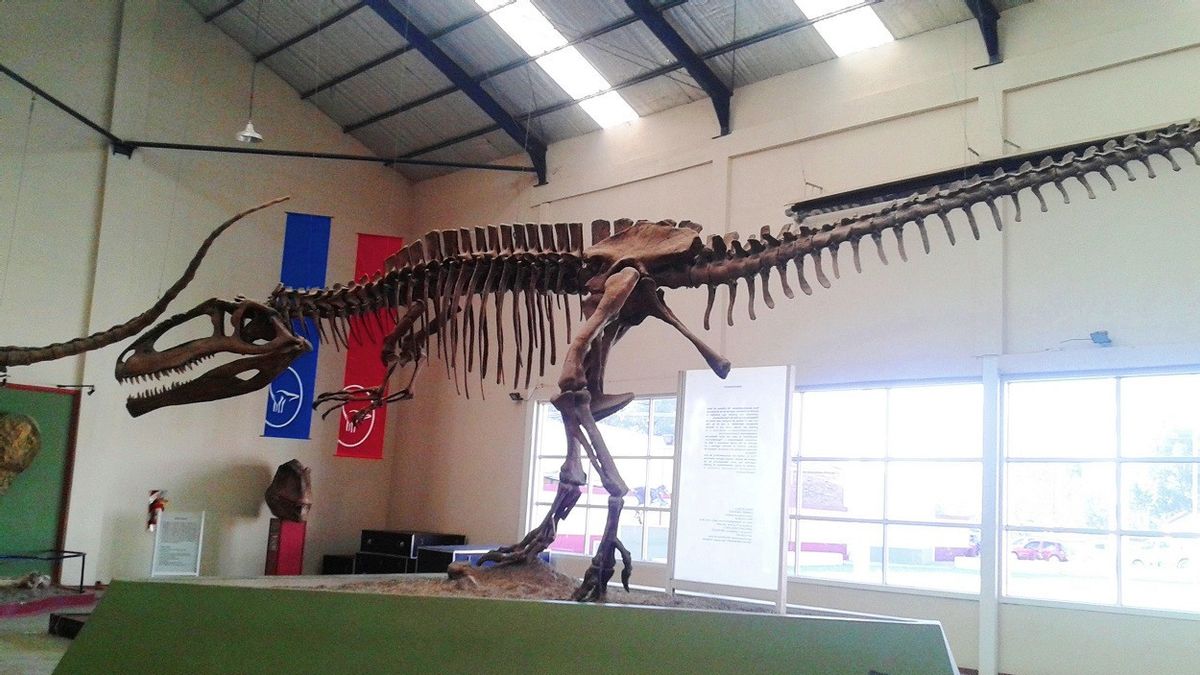JAKARTA - A large number of fossils unearthed in Argentina's southern Patagonia region offer the oldest known evidence that several dinosaurs reproduced in complex and well-organized herd structures, with adults caring for the young and sharing common nesting sites.
Scientists say the fossils include more than 100 dinosaur eggs and bones from about 80 juveniles and adults of a Jurassic Period plant-eating species called Mussaurus patagonicus, including 20 very complete skeletons. The animals experienced a mass death event, possibly caused by the drought, and their bodies were then buried by wind-blown dust, the researchers said.
"This is a pretty dramatic scene from 193 million years ago frozen in time," said paleontologist Diego Pol of the Egidio Feruglio Museum of Paleontology in Trelew, Argentina, who led the research published in the journal Scientific Report.
Mussaurus, which grew to about 20 feet (6 meters) long and weighed about 1.5 tons, had a long neck and tail, with a small head. It is bipedal as an adult, but a newborn has four legs. Mussaurus lived in the early Jurassic, the second of three periods that comprise the age of the dinosaurs. It was a relatively large animal for its time, much larger than contemporary meat-eating dinosaurs. Dinosaurs became true giants later in the Jurassic.
"This site is unique. It preserves dinosaur nesting sites including small, delicate dinosaur skeletons and eggs with embryos inside. The specimens we found suggest that herd behavior existed in long-necked dinosaurs since their early history. These were social animals, and we think this is may be an important factor to explain their success," said Pol.
The animals were found to have been grouped by age at the time of their death, with hatchlings and eggs in one area while juvenile skeletons clustered nearby. The eggs were laid in layers in the trench. Adults are found alone or in pairs.
This phenomenon, called "age separation," signifies a complex social structure, the researchers said, including adults foraging and caring for young. The researchers suspect that herd members return to the same place during successive seasons to form breeding colonies.
"The young live with the adults at least until they reach adulthood. It is possible that they live in the same herd once they reach adulthood, but we don't have the information to corroborate that hypothesis," said paleontologist and study co-author Vincent Fernandez of the History Museum. Nature in London.
Herd behavior can also protect young and vulnerable individuals from predatory attacks.
"This is a strategy for the survival of a species," Fernandez continued.
To note, the oldest previous evidence for dinosaur herd behavior dates back to about 150 million years ago.
Their nesting sites are on the shores of dry lakes with ferns and conifers in a warm but seasonal climate. The eggs are the size of a chicken, and the skeleton of the hatchlings fits in the palm of a human hand. Adults become as heavy as a hippopotamus.
A scanning method called high-resolution X-ray computer tomography confirmed that the embryo inside the egg did indeed come from Mussaurus.
Mussaurus is a type of dinosaur called a sauropodomorph, which represents the first major success story among herbivorous dinosaurs. Meanwhile, sauropodomorphs were the evolutionary pioneers for a group called sauropods known for their long necks and tails and four pillar-like legs.
The largest land animal in Earth's history was the sauropod successor to the sauropodomorphs, as exemplified by the Patagonia dweller called Argentinosaurus, which may have been 118 feet (36 meters) in length and over 70 tons.
The English, Chinese, Japanese, Arabic, and French versions are automatically generated by the AI. So there may still be inaccuracies in translating, please always see Indonesian as our main language. (system supported by DigitalSiber.id)













